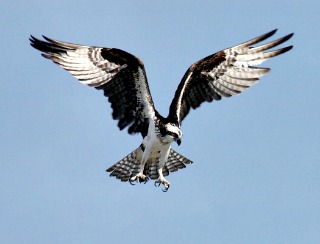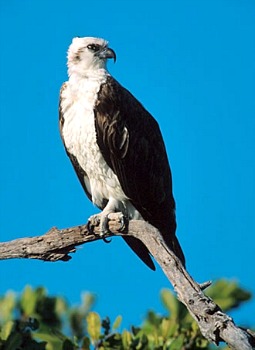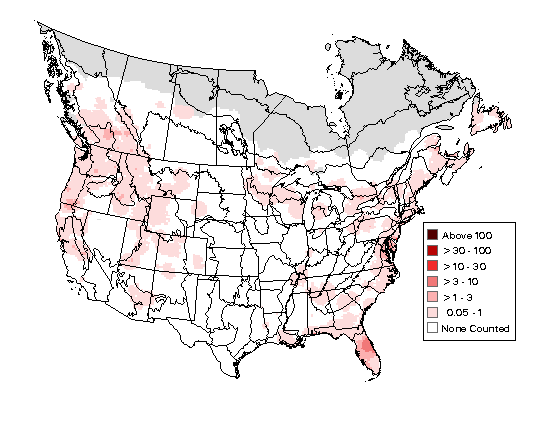Osprey

Osprey Information
Length: 21 - 24"
Habitat:
The Osprey is found near lakes, rivers, marshes and coastal areas. It prefers habitat with tall trees, snags, or cliffs for nesting.
Diet:
The Osprey preys almost exclusively on fish, including bullhead, trout, and salmon. On rare occasions, it will eat frogs, snakes, birds, and small mammals.
Interesting Facts about the Osprey
- The Osprey is widely distributed throughout the word and can be found on every continent except Antarctica.
- These birds will nest in loose colonies if the habitat has sufficient food to support this larger group.
- Since the Osprey feeds almost entirely on live fish, it is also known as the Fish Hawk.
- Once it locates its prey, it dives feet first into the water, often becoming completely submerged before rising out of the water with its catch. This raptor is able to close its nostrils to keep the water out while doing this.
- Unlike other raptors, the Osprey can bend its outer toe backward, allowing it to grasp a fish firmly with two talons in front and two in back.
Osprey

© arttoday.com
Osprey
Identification Tips
- Wingspan: 54 inches
- Large, narrow-winged hawk
- Flies on flat wings with distinct kink at elbow
- Wings taper to a rounded tip
- Short hooked beak
- White cap
- Dark brown eyeline broadening behind eye
- Dark brown nape, back and upperwings
- Wings from below: flight feathers white barred with black, undersecondary coverts white and underprimary coverts black producing rectangular black mark at wrist
- White chin, throat, breast and belly
- Brown tail has a number of white bands
- Hovers and then plunges into water after fish
- Underparts entirely white
- Dark necklace of streaks on throat
(Credit: U. S. Geological Survey)
Osprey Breeding Bird Survey Map,
2011-2015

(Image credit: USGS)
Osprey
Range Maps from Cornell
Osprey breeding, migration, winter and year-round range
Includes separate map of sightings.
Osprey Christmas Bird Count Map
Historical CBC Map from USGS